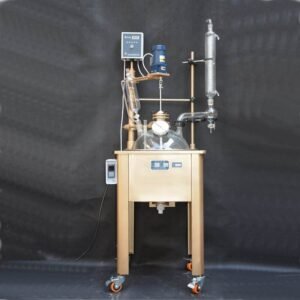
Automation is revolutionizing the chemical instrument industry, enhancing efficiency, accuracy, and productivity in laboratories and production facilities. As organizations seek to streamline processes and reduce human error, the adoption of automated technologies has become increasingly prevalent. This article examines how automation is transforming the landscape of chemical instruments.
1. Enhanced Precision and Consistency
Automated chemical instruments provide a level of precision that is difficult to achieve through manual processes. With technologies such as robotic liquid handlers and automated titration systems, laboratories can ensure that experiments are conducted consistently, minimizing variability and enhancing reproducibility. This is especially crucial in fields like pharmaceuticals and biochemistry, where precision is vital for product safety and efficacy.
2. Increased Throughput
The ability to conduct multiple experiments simultaneously is one of the key benefits of automation. Automated systems can handle a larger volume of samples in a shorter amount of time, significantly increasing laboratory throughput. This capability is particularly valuable in high-throughput screening environments, such as drug discovery, where rapid results are essential for advancing research.
3. Remote Monitoring and Control
Automation technologies often come equipped with remote monitoring and control capabilities. Laboratory personnel can track experiments in real-time, adjusting parameters and responding to issues as they arise without needing to be physically present. This not only improves operational efficiency but also enhances safety by minimizing the need for direct human involvement in potentially hazardous processes.
4. Cost Efficiency
While the initial investment in automated systems can be significant, the long-term cost savings are substantial. Automated instruments reduce the need for manual labor, allowing personnel to focus on more complex tasks that require critical thinking and expertise. Additionally, automation helps to minimize waste and optimize resource usage, leading to lower operational costs overall.
5. Integration with Data Management Systems
Modern automated chemical instruments are designed to integrate seamlessly with laboratory data management systems. This integration enables the automatic recording of experimental data, streamlining the data collection and analysis processes. Laboratories can achieve better data traceability and compliance with regulatory requirements, enhancing overall quality assurance.
Conclusion
The transformation brought about by automation in the chemical instrument industry is profound. From improved precision and increased throughput to remote monitoring and cost efficiency, automated technologies are shaping the future of laboratories. As the industry continues to embrace automation, organizations that invest in these advancements will be better positioned to enhance their operations and drive innovation.



